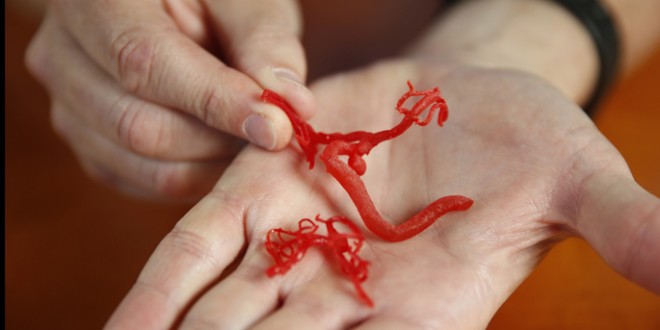By: Dan
In a breakthrough that could lead to printable organs and an enhanced understanding of human physiology, researchers from Lawrence Livermore National Labs have 3D-printed functional blood vessels that look and function like the real thing.
3D bioprinters are similar to conventional 3D printers, but instead of using inert materials, they use “bio-ink:” basic structural building blocks that are compatible with the human body.
To create the 3D-printed blood vessels, a LLNL team headed by research engineer Monica Moya a special biomaterial with living cells. The material and environment were designed to enable small blood vessels, or human capillaries, to develop on their own. This process takes a while, so initially, tubes are printed out of cells and other biomaterials to deliver essential nutrients to the surrounding printed environment. Eventually, the self-assembled capillaries are able to connect with the bio-printed tubes and deliver nutrients to the cells on their own, enabling these structures to function like they do in the body.
The LLNL scientists will soon be able to use a brand new 3D bioprinting lab equipped with a more precise printer capable of higher resolution and larger structures.
“It’s going to change the way we do biology,” said Moya.
 Tempus Magazine By Students, For Students
Tempus Magazine By Students, For Students 



